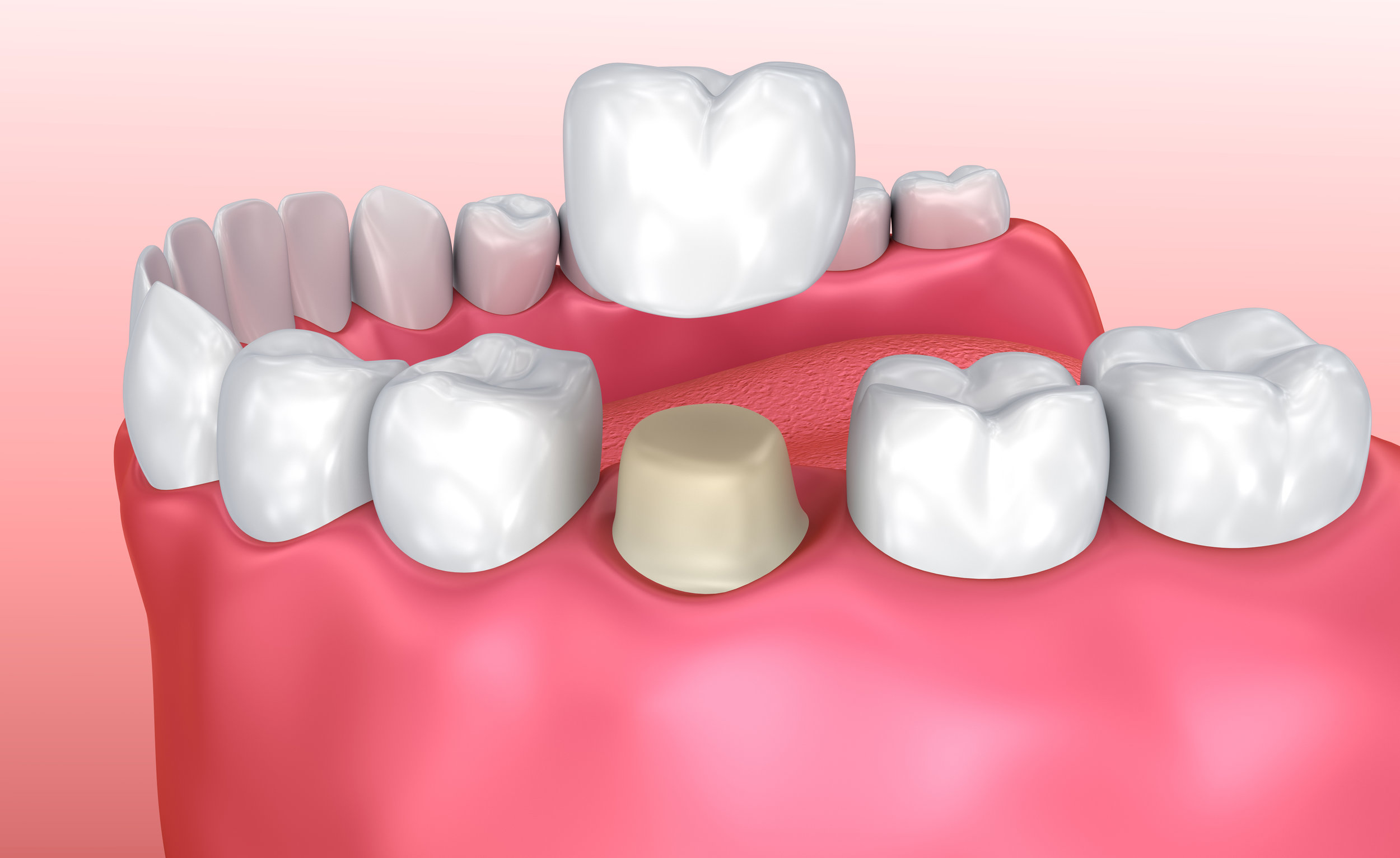If your tooth is damaged but not lost, we can use a crown to restore its shape, appearance, and function. You may need a crown if you have a root canal, a large filling in a tooth, or a broken tooth.
A crown, also called a cap, is a hollow, artificial tooth used to cover a damaged or decayed tooth. The crown restores the tooth and protects it from further damage. We can also use a crown to cover a discolored or misshapen tooth. A tooth fixed with a crown looks and works very much like a natural tooth.
What is the procedure for a crown?
We administer a local anesthetic.
To make room for the crown, we file down the tooth that needs to be restored.
We take an impression of the filed-down tooth and nearby teeth. Then, we use this impression to make your custom crown. Built using restorative material based on the impression, the final crown will be the right shape for your mouth.
Until your final crown is ready, we'll place a temporary crown over the tooth that needs to be restored. Made from an impression of your tooth before it was filed down, the temporary crown protects your tooth until the final crown is ready. A temporary crown may differ in shape and color from the final crown.
On your next visit, we replace your temporary crown with the final one. After checking to ensure the right fit, shape, color, and bite, we cement the crown into place.
These are the most common steps in making a crown, but your tooth may require special care. You may need orthodontic treatment, gum treatment, or root canal treatment. These procedures will take more than 2 visits to deliver the final crown.
Different types of crowns
We make crowns from various materials. Depending on your needs, we will suggest a material, or combination of materials, that is right for you.
Metal crowns are made of gold. They generally last a long time, won’t chip or break, and tend not to wear down your opposing natural teeth. However, the gold color looks less natural, particularly on front teeth.
Zirconia crowns are monolithic crowns made to provide a durable, more esthetic alternative to posterior porcelain-fused-to-metal crowns. They are extremely strong and ideal for demanding situations like bruxers and areas with limited occlusal space.
Porcelain crowns look the most natural. They are more brittle than metal or composite, and may chip more easily. Because of this, we do not usually place them on back teeth.
Porcelain-fused-to-metal crowns look natural and are stronger than porcelain or composite crowns. They won’t chip as easily as porcelain or ceramic crowns. However, depending on their design, the metal may show if your gums are thin or shrink.
What else should I know?
Crowns are strong and generally last for about 10 years or longer if you take good care of them. Brush and floss your crown, just like you clean your natural teeth. Crowns may not be as strong as your natural teeth. So, like your natural teeth, remember not to bite down on hard objects or use your teeth to open or cut things.

